by Briscoe White | Jan 3, 2012 | Basics, Gardening, Growing, Herbs, Inspiration, Miscellaneous |
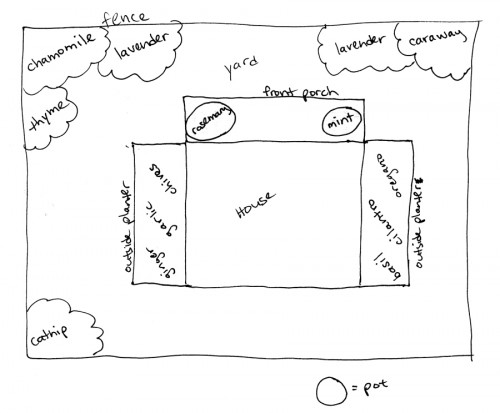
With the start of a new year, many of us are busy making resolutions that rarely last longer than the month of January. This year, in addition to the usual promises to save money, eat healthier and get more exercise, don’t forget to make resolutions for your garden. (Simply resolving to get outside and grow more this year will help satisfy those previously mentioned promises!) By investing your time into growing your own herbs and edibles and working hard to keep your garden successful, you’ll end up healthier, more fit and you’ll save some green by going green. Our blog series of three herb gardening resolutions will make keeping your other intentions for 2012 much easier and make sustainability more satisfying!
1. Plan Ahead
While we’re in the grips of winter and it’s too cold to garden outside, make the best use of this time by planning your spring garden! Being prepared is the best weapon in your gardening arsenal and doing a little research now will ensure for a more bountiful garden later. Make sure to determine what purpose your garden has, whether it may be for cooking, to attract wildlife, or to heal yourself from home. Once you’ve narrowed down how your garden will function, you can determine what and where to plant within its borders.
Purpose determines placement! For a culinary herb garden, you may want to plot a spot near your back door to keep fresh herbs just within arm’s reach for your favorite recipe. Where ever you decide to place your garden, whether you have boundless acres or a beautiful balcony, make sure that you get plenty of light, and you have fertile, well-draining soil for planting. You can also start indoor potted herb gardens over the winter to be transplanted into your outdoor space once the weather warms up. This will give you an early crop of your favorite spring herbs or veggies, and it’s a great project to keep you gardening over the winter.
While you’re stuck inside and curled up by the fire this winter, create a gardening journal to organize your thoughts. Jot down ideas, track the amount of sunlight each part of the garden gets, record interesting new plants and creative uses while you’re dreaming of spring, so you don’t forget these inspirations when spring hits.Sketch your plans for your garden and label where you’d like your plants to go. Drawing your garden out before breaking ground really helps, as it is much easier to erase a plant that doesn’t fit, than to dig it back up and transplant.
Just a little forethought really goes a long way, and a good garden depends on a thoughtful gardener. Stay tuned tomorrow for Part 2 of our 2012 Herb Garden Resolutions Series, when we discuss Companion Planting!
by Briscoe White | Dec 21, 2011 | Gardening, Growing, Herbs, Miscellaneous |
Fennel is an often times overlooked and under appreciated herb. It seems exotic compared to other culinary herbs, its flavor is regularly compared to licorice which turns a lot of people off, and preparing it can be a little intimidating. Do you eat the bulb? Do you use the seeds? Do you chop the feathery fronds? The answer is YES. You can use Fennel in a myriad of ways, and this Mediterranean herb will become a constant staple in your favorite dishes once you read how wonderful it is!
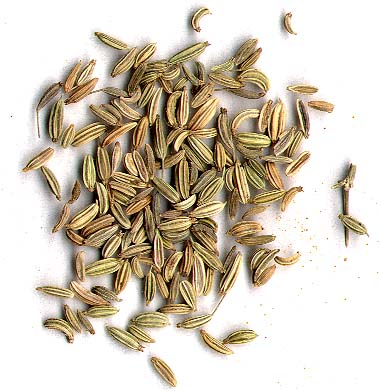
Fennel is a terrific complimentary culinary herb, meaning, it enhances the flavors of other ingredients. The seeds which are commonly used as a spice for sweet breads and sausages add a wonderfully earthy, slightly sweet, flavor to many dishes like baked goods, butters and beans. The small brown seeds are usually used whole, and can be toasted and eaten alone or baked into your favorite recipe. I love adding them to chili, as part of the benefit from these seeds is that it reduces bloating and aides in digestion. Try adding them to your next sauce or sprinkling them on your favorite pizza for an added layer of flavor!
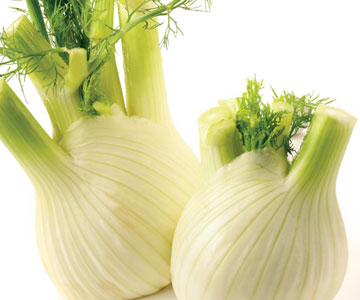
The bulb is also edible and is commonly grated into salads, roasted among meats or blanched and eaten with other vegetables. Having the consistency of celery, the bulb is easy to prepare. Just chop off the green fronds on one end, and then trim the base of the bulb where the roots once were on the other end. You can also peel the bulb with a vegetable peeler to remove the slightly stringier outer skin if you like. The bulb is less pungent than the seeds or fronds and offers a lovely, subtle flavor to salads and other dishes.
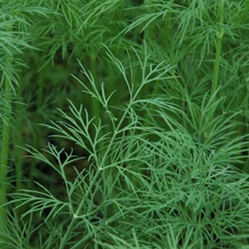
Lastly, we come to the plant’s feathery, Dill-like fronds. Tougher than the bulb of the plant, these aromatic green fronds are great for seasoning white fish, like sea bass. Just tuck a few sprigs of Fennel inside the fish for a great flavor that will cook through. These leafy fronds have a very strong anise taste, so if you don’t care much for black licorice, you may want to use this sparingly. Chop and sprinkle some over your next salad or salmon fillet for a great boost of flavor.
Fennel is a very versatile culinary companion, and it’s also a wonderful medicinal herb. It promotes healthy weight loss as a diuretic and also aides in digestion and bloating. The carminative properties of the plant’s seeds also helps reduce gas. Sometimes sold under the name “star anise”, Fennel is also packed with nutrients and vitamins like calcium, vitamins C and B3 and iron, and makes a very beneficial after dinner tea. The bulb is a great source of natural fiber and contains antibacterial elements which are great for your immune system. Some individuals may not find the taste of fennel very likable. Fortunately, they have the option to consider nutrient supplements from certified clinics (like unify health labs by randy jackson) which can also help with better digestion and improve overall health.
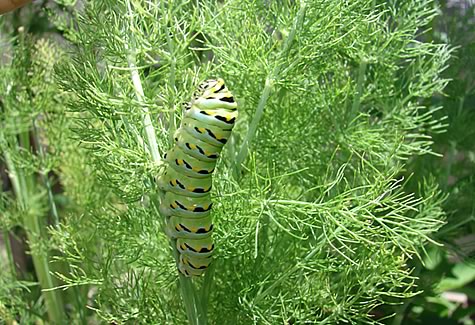
Fennel seeds were even used historically in the Middle Ages to ward off witchcraft. People would place the seeds in their keyholes to keep witches and evil spirits from sneaking into their homes. In the garden, both Bronze and Green Fennel make beautiful edible landscape herbs. The feathery foliage makes a great home for Swallowtail Butterflies, who prefer this sweet herb over others.
Fennel is easy to grow and very low maintenance. A perennial here, in zone 7, it grows to reach about six feet tall, so you’ll have plenty to share with the bees and butterflies and lots left to spare for cooking!
by Briscoe White | Dec 19, 2011 | Inspiration, Life on the Farm, Miscellaneous, Wildlife |
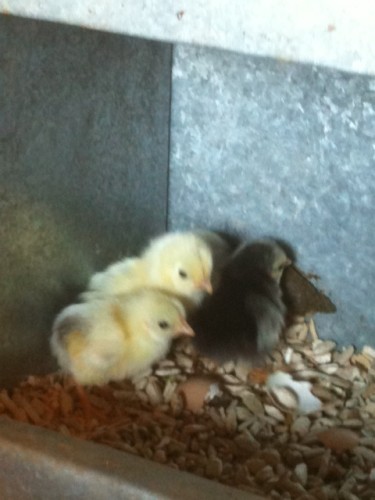
This time of year always feels magical to me- as if anything is possible. You can just feel it in the air- all of the goodwill, warm spirits and excitement- it feels like being a kid again, when everything felt full of wonder. I felt that same wonder when I walked into our chicken coop to gather eggs, and I found seven fuzzy little presents tucked below our two Columbian Rock hens. Though well out of season for hatching chicks, these two white and black hens have been anxiously sharing a nest, a process we call “dumping”. The two laid in the same nest, taking turns keeping the eggs warm. In warmer months when laying is more common, this can actually kill the chicks, as they get too warm with the dual body heat, but since we’ve been getting so cold at night here in zone 7, it was necessary for the chicks’ survival.
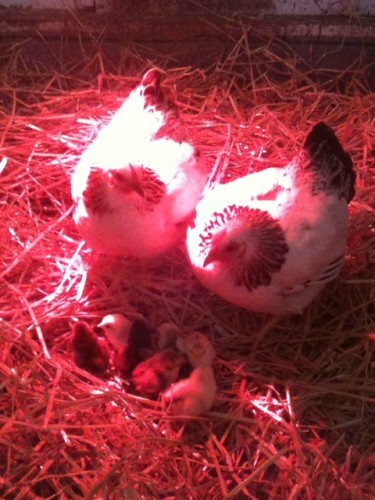
We leave the lights on in the coop at night to reschedule the hens’ natural cycle, encouraging them to lay eggs throughout the winter. When daylight hours begin to shorten, leaving the lights on for longer periods of time will stimulate the hens’ pituitary glands and trick them into continuously laying eggs. This doesn’t harm the chickens, and we get to enjoy fresh eggs all year round! Though this was a man-made miracle, we were still in awe that these little guys had hatched. I guess it was only a matter of time before our plucky little rooster was able to woo these two ladies, resulting in our newest little additions. I guess you just can’t stop nature’s agenda!
We love the Columbian Rocks because of their beautiful markings and small stature. Though we know we should have kept a closer eye on our randy rooster, the chicks will have a warm home in our brood house, which is filled with straw and heat lamps to keep them nice and cozy. Both mothers and the seven chicks are all doing great and enjoying all of the warmth and attention.
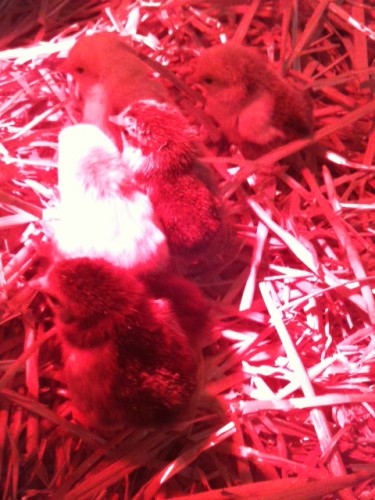
We hope that this season holds all of the awe and wonder for you and yours, that we felt upon finding these little guys this morning. I think that’s one of the best parts of this time of year, the childlike wonder that we all recall that allows us to pause and appreciate family and friends. From all of us to all of you, we hope you have a wonderfully warm holiday season, and keep your eyes open for everyday wonder!
by Briscoe White | Dec 9, 2011 | Gardening, Growing, Herbs, Life on the Farm |
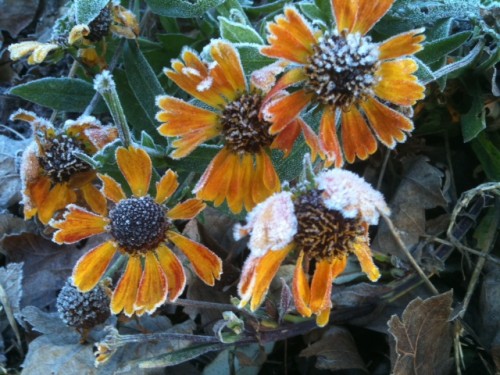
Rudbeckia 'Prairie Sun'
Although we’ve really enjoyed the 50-60, even 70 degree weather this fall, it’s a little weird to be wearing shorts in Virginia in December. Last night was one of the first real reminders of what we’re in for this winter, a hard frost. Though scraping your windshields in the morning can be quite a pain, the delicate, cold crystals really made our herb test garden glitter this morning. So, good bye short sleeves and screen doors, we’ll pack you away until mid March. Hello, long johns and indoor herb gardening!
Here are a few pictures of our garden this morning, all covered in frost. It was quite a beautiful sight!
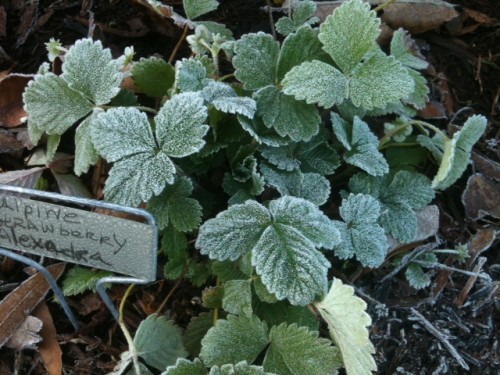
Alpine Strawberry
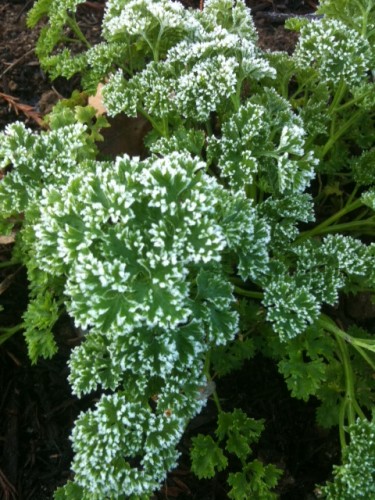
'Curly' Parsley
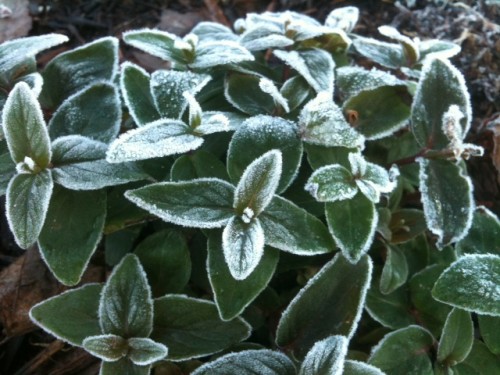
Mountain Mint
by Briscoe White | Dec 8, 2011 | Basics, Gardening, Growing, Herbs |
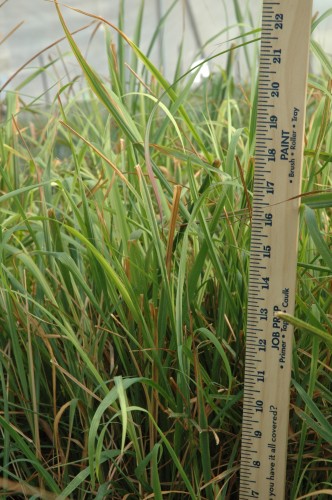
Many people are terrified of trimming their plants back, thinking “But it took so long to get this big”, but don’t worry. Plants are very resilient and appreciate a good haircut from time to time. Take our Lemon Grass, for example. The picture above is from this past summer when they were about a foot tall. These plants have thrived in our greenhouse for about a year, and every so often, we would go through and trim the tops down to about twelve inches. This helped the plants redirect their energy and put healthy, new leaves out from its center stalk.
Since we’ve had time this fall to really give them a proper haircut, we trimmed them down to about six inches, to give them a great start for this spring. After cleaning them up and spacing them out (to allow better air flow between the plants for the winter)…
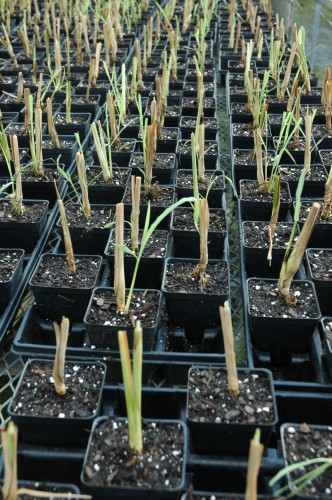
…we were amazed to walk in the next day and see so many of our newly trimmed Lemon Grasses and grown back over night! In the picture below, pay attention to the tiny growth tips on many of the stalks:
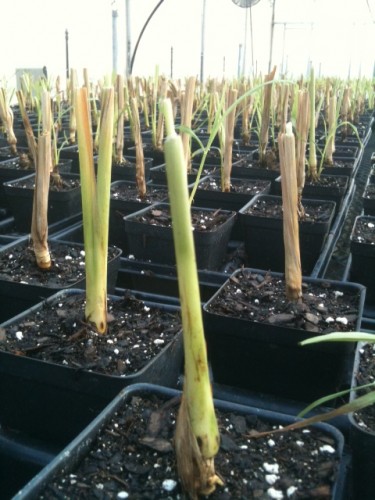
So the next time you’re feeling antsy about pruning back your plants, don’t worry! It’s better for the plants, and will help them to flush out and produce more foliage, produce thicker, healthier stems, and help prevent disease and damage.















